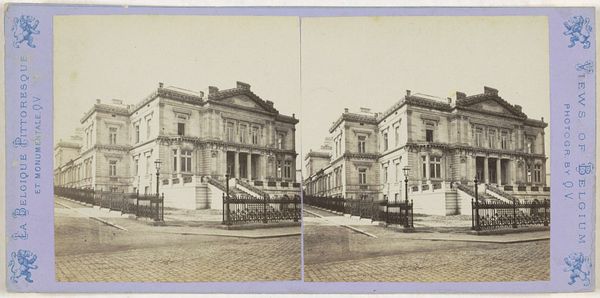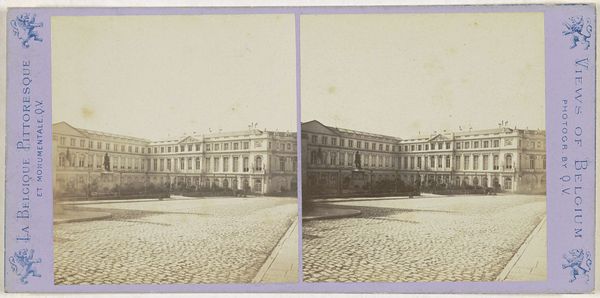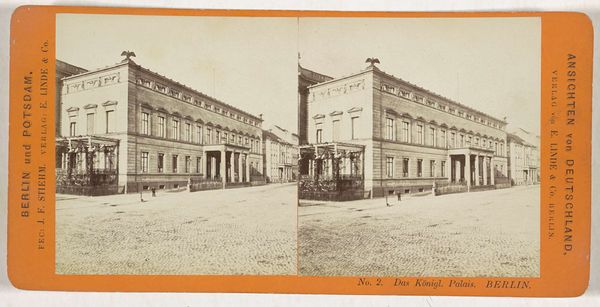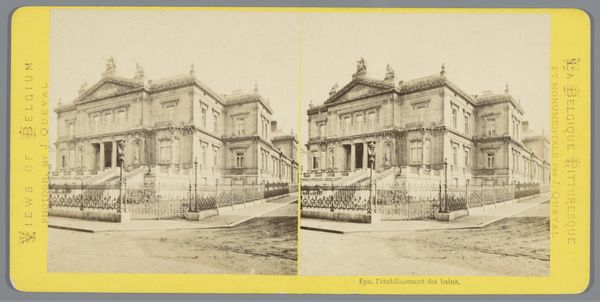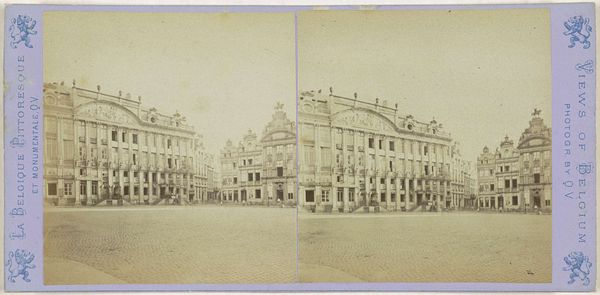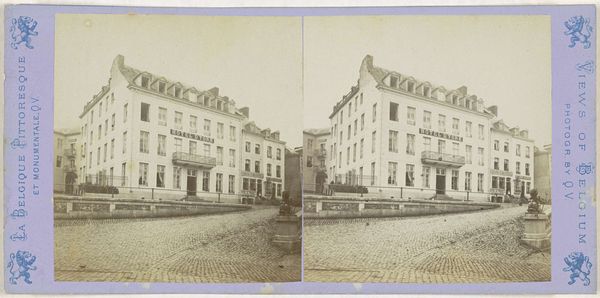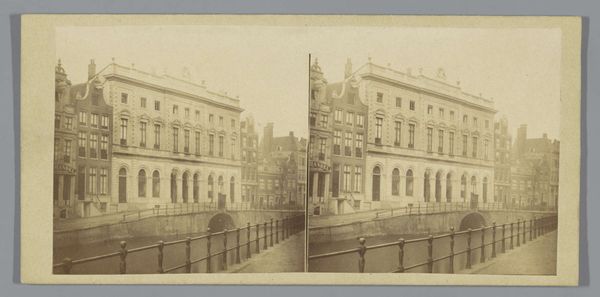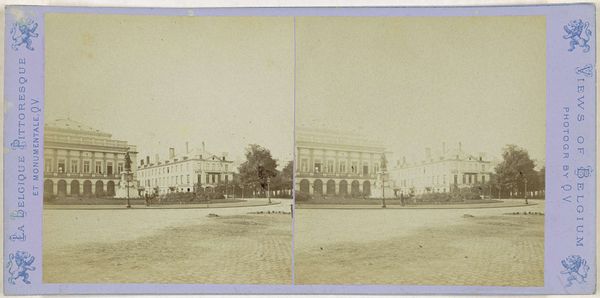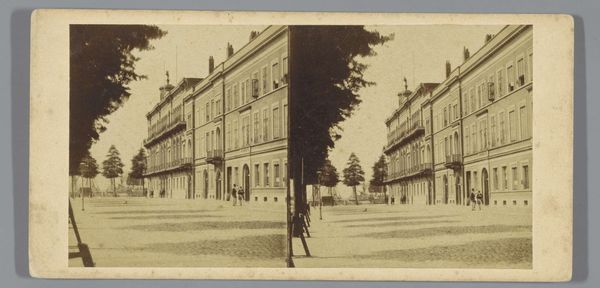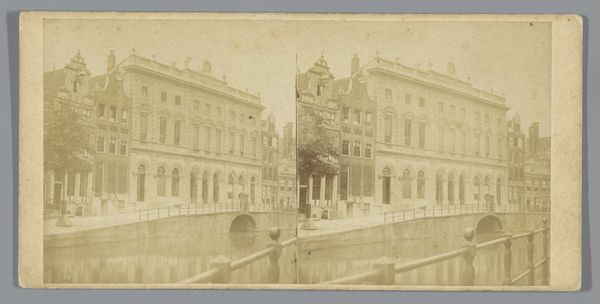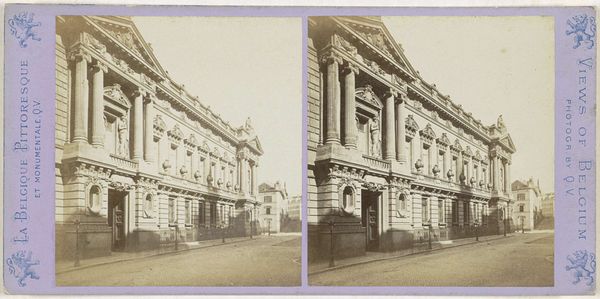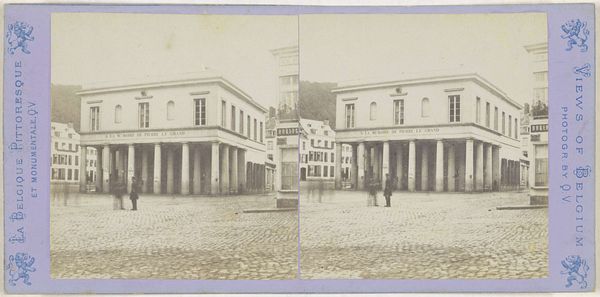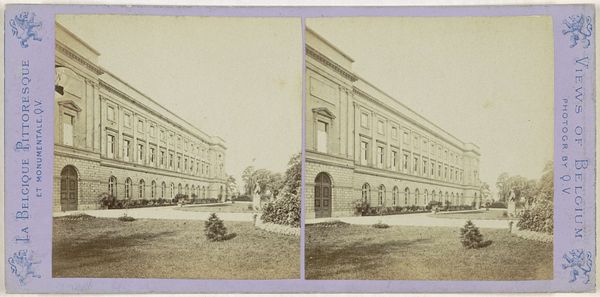
Dimensions: height 85 mm, width 175 mm
Copyright: Rijks Museum: Open Domain
Editor: This is a stereoscopic photograph titled "Gezicht op een badhuis in Spa," taken between 1866 and 1870 by Jules Hippolyte Qu\u00e9val. The sepia tones and neoclassical architecture give it a very formal and imposing feel. What do you see when you look at this piece? Curator: What I see is a document of social stratification rendered in light and shadow. A bathhouse in Spa during this era wasn't merely a place for hygiene; it was a site of social gathering, leisure, and often, political maneuvering for the elite. Photography, as a relatively new medium, was also finding its place in constructing and reinforcing these power structures. Consider who had access to being photographed, who could afford to visit Spa. Editor: So you're saying that the very act of capturing this scene through photography underscores existing social inequalities? Curator: Precisely. And let's examine the neoclassical architecture itself. The bathhouse emulates the grandeur of ancient Roman bathhouses. Neoclassicism, you'll remember, was embraced by powerful nations seeking to legitimize their own authority, linking themselves to an idealized past. In this way, the image is not just a neutral depiction of architecture, but also a symbolic statement about power, heritage, and belonging. Editor: It’s interesting to consider how even a seemingly straightforward cityscape can be loaded with these layers of meaning. Did Qu\u00e9val consciously intend this message, or is it more of a reflection of his time? Curator: Intention is difficult to ascertain, but the very selection of subject matter, the framing, and the conscious deployment of photography all point towards a worldview shaped by the prevailing social and political currents. By situating it within a broader historical and cultural context, we start to reveal the intricate web of meanings embedded in the image. Editor: I see what you mean. This has totally changed how I view seemingly simple photographs. It's more than just documentation; it's a social text. Curator: Indeed. Art invites us to critically examine the world around us, and photographs like this one can open up avenues for conversations about class, representation, and power.
Comments
No comments
Be the first to comment and join the conversation on the ultimate creative platform.
